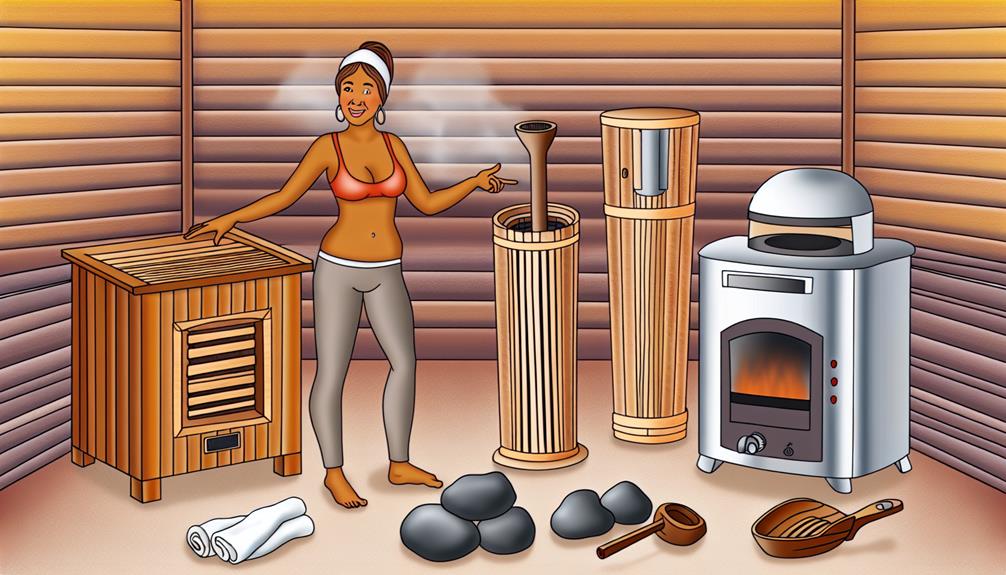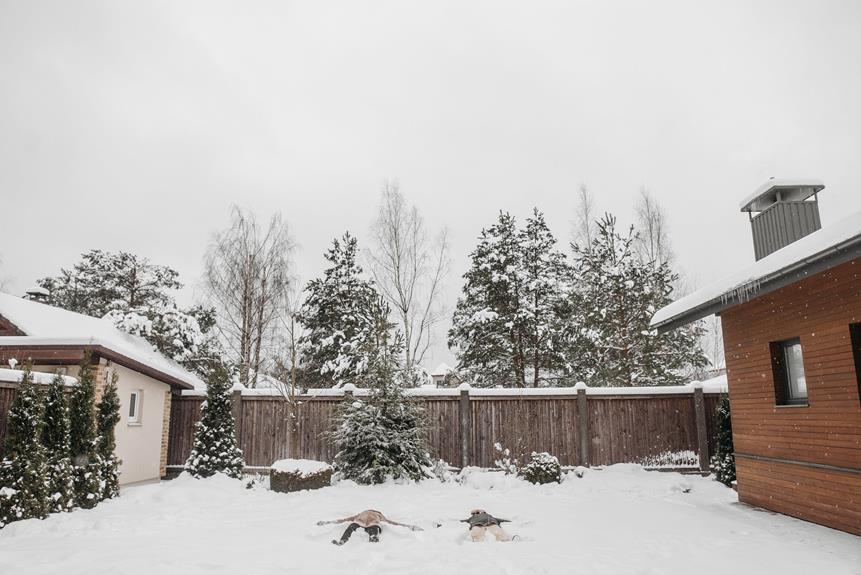Building a sauna at home might seem like an overwhelming task, but with the right guidance, it can be a fulfilling project. Imagine having your personal oasis of relaxation just steps away.
From selecting the perfect location to ensuring proper ventilation, each step plays a crucial role in creating a serene sauna environment. Stay tuned to discover the essential elements needed to bring this dream to life in your own home.
Key Takeaways
- Choose a suitable location for convenience and proper ventilation.
- Use high-quality materials like cedar for durability and insulation.
- Select the right sauna heater type based on preferences and efficiency.
- Design the interior with functionality, aesthetics, and safety in mind.
Sauna Location Considerations
When selecting the optimal location for your sauna, prioritize both convenience and functionality, ensuring a space that accommodates proper ventilation and electrical requirements.
Building an indoor sauna in your home allows for greater control over factors like bench space, heat source placement, and overall design. Consider the sauna door's swing direction to maximize available space within the room while maintaining a comfortable entry and exit point.
Adequate ventilation needs should be met to ensure proper air circulation and prevent moisture buildup, which can damage the sauna over time. Additionally, when planning the sauna location, factor in the proximity to existing electrical wiring to facilitate a safe and efficient connection.
Hiring a licensed electrician for this task is crucial to guarantee both safety and compliance with regulations, providing peace of mind as you embark on this rewarding home improvement project.
Essential Sauna Building Materials
For constructing a sauna, selecting the right materials is crucial to ensure durability and optimal performance. When you build a custom sauna at home, consider using cedar, poplar, or pine for the sauna space. These woods are resistant to moisture damage, making them ideal for sauna construction.
Ensure proper insulation by using R-11 for interior walls and R-19 for outside walls, along with a foil vapor barrier to prevent moisture penetration. When building sauna benches, make sure to provide enough bench space per person for comfort. Install tongue and groove wall boards horizontally for a seamless look and effective heat retention.
Furthermore, when incorporating sauna heaters such as an electric heater in your indoor sauna, follow the manufacturer's instructions diligently to guarantee proper clearance and wiring for safety. By choosing the right materials, you can create a durable and efficient sauna space for your home.
Choosing the Right Sauna Heater

Choosing the right sauna heater is crucial to ensure optimal heat distribution and efficiency in your sauna space. When selecting the perfect sauna heater for your setup, consider the following options:
- Electric Heaters: Popular for their ease of use and low maintenance requirements, electric heaters are a convenient choice for heating saunas.
- Infrared Lights: These lights produce penetrating heat that can stimulate your body's natural sweating ability, providing a unique sauna experience.
- Carbon Sauna Heaters: Known for their ability to heat saunas evenly and efficiently, carbon heaters are a great option for those looking for heating efficiency in their sauna sessions.
Each type of sauna heater offers different benefits, from the traditional experience of wood heaters to the efficient heating of carbon sauna heaters. Consider your preferences, setup, and desired sauna experience when making your sauna heater choice.
Building the Sauna Interior
To create a captivating sauna interior that combines functionality with visual appeal, carefully select materials and design elements that complement your chosen sauna heater. Cedar wood is an excellent choice for the sauna interior due to its natural beauty and anti-bacterial properties, ensuring a clean and relaxing experience.
For a traditional Finnish sauna aesthetic, consider using Nordic whitewoods to evoke a sense of authenticity and warmth. Installing windows not only enhances the sauna's aesthetics but also provides natural light, creating a more inviting atmosphere.
Coordinate wood accessories such as benches, bucket, and ladle to create a stylish and cohesive interior design that elevates the overall look of your sauna. It's essential to ensure that the sauna interior is both functional and visually appealing, as this will contribute to a more enjoyable and relaxing sauna experience for you and your guests.
Final Sauna Assembly Steps

Consider incorporating these final steps to complete the assembly of your sauna for a satisfying and functional relaxation space.
- Install interior lighting fixtures above the benches to ensure ample illumination during sauna sessions.
- Add a sauna door with tempered glass for both safety and aesthetic appeal.
- Finish the sauna interior with cedar paneling, known for its durability and ability to enhance the overall sauna experience.
Proper ventilation is crucial in a sauna to maintain a comfortable environment. Add a vent near the ceiling to allow steam and heat to escape efficiently.
Before regular use, it's essential to test the sauna heater and controls to ensure they're functioning correctly, promoting both the longevity of the sauna equipment and the safety of those using it.
Frequently Asked Questions
Is It Cheaper to Build Your Own Sauna?
Building your own sauna presents cost savings, DIY options, material choices, and customization benefits. Ensure insulation, ventilation, and safety measures, considering time commitment and maintenance. Achieve energy efficiency, design flexibility, and personal satisfaction with proper planning.
Can You Build a Sauna From Scratch?
Yes, you can build a sauna from scratch. DIY sauna plans offer the chance to create a personalized experience. Choosing building materials, designing benches, and selecting a heater provide benefits like cost-effectiveness and tailored designs. Insulating walls and custom sizes enhance the personal sauna experience.
Do Indoor Saunas Need to Be Vented?
Yes, indoor saunas need proper venting to regulate humidity, prevent mold, and ensure comfort. Use vents or exhaust fans to circulate air. Ventilation is crucial for safety, preventing overheating, and maintaining a pleasant sauna experience.
Does a Home Sauna Need Plumbing?
You'll be thrilled to know that when it comes to sauna installation in your home oasis, plumbing is as necessary as a snowman in the desert. DIY sauna projects focus on heat, insulation, and relaxation, not plumbing hassles.
Conclusion
In conclusion, building your own sauna at home can be a rewarding and relaxing project. Remember to choose a suitable location, quality materials like cedar, and a reliable heater for a comfortable experience. Pay attention to ventilation and insulation for efficient heating.
With the right accessories and safety measures in place, you'll be able to enjoy your own personal oasis in no time. So go ahead, kick back, relax, and let the sauna vibes take you back to the good ol' days of self-care.

Leave a Reply